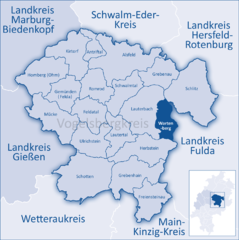
Guxhagen is a municipality in Schwalm-Eder district in northern Hesse, Germany.

Oberaula is a municipality in the Schwalm-Eder district in Hesse, Germany.

Ottrau is a municipality in the Schwalm-Eder-Kreis in Hesse, Germany.
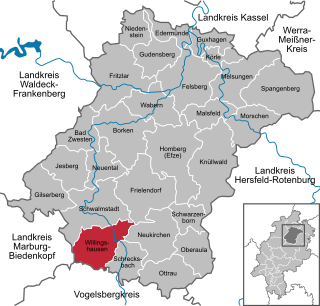
Willingshausen is a municipality in the Schwalm-Eder district in Hesse, Germany.

Grebenau is a town in the Vogelsbergkreis in Hesse, Germany.

Antrifttal is a municipality in the Vogelsbergkreis in Hesse, Germany.

Freiensteinau is a municipality in the Vogelsbergkreis in Hesse, Germany.

Herbstein is a small town in the Vogelsbergkreis in Hesse, Germany.
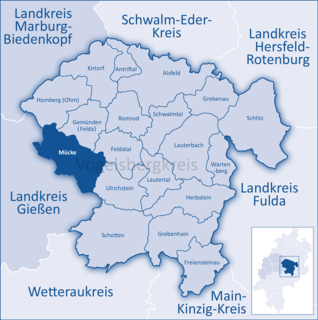
Mücke is a community in the Vogelsbergkreis in Hesse, Germany.

Romrod is a small town in the Vogelsbergkreis in central Hesse, Germany.
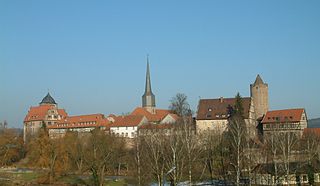
Schlitz is a small town in the Vogelsbergkreis in eastern Hesse, Germany.
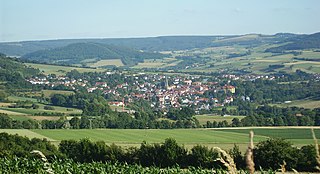
Tann is a town in the district of Fulda, in Hesse, Germany. It is situated in the Rhön Mountains, 27 km northeast of Fulda. It is an accredited Spa town at the Ulster River.
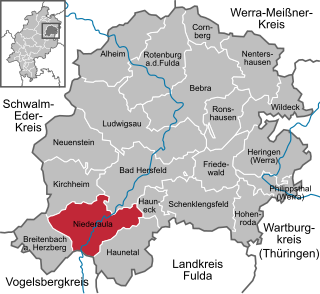
Niederaula is a market community in Hersfeld-Rotenburg district in northeastern Hesse, Germany, 59 km south of Kassel.
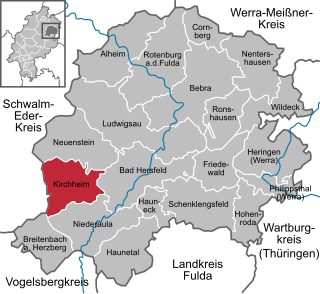
Kirchheim is a community in Hersfeld-Rotenburg district in northeastern Hesse, Germany.

Breitenbach am Herzberg is a municipality in southwesternmost Hersfeld-Rotenburg district in eastern Hesse, Germany.
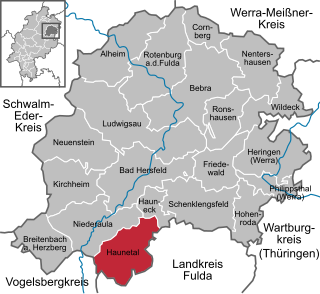
Haunetal is a municipality in Hersfeld-Rotenburg district in eastern Hesse, Germany. Haunetal is the district's southernmost municipality.

Hauneck is a community in Hersfeld-Rotenburg district in eastern Hesse, Germany.

Friedewald is a municipality in Hersfeld-Rotenburg district in eastern Hesse, Germany, directly east of Bad Hersfeld.

Lauterbach is a town in the Vogelsbergkreis district of the federal state of Hesse in central Germany. In 1983, the town hosted the 23rd Hessentag state festival.

Burg- und Nieder-Gemünden station is, along with Ehringshausen (Oberhess) station, one of two stations in the municipality of Gemünden (Felda) in Vogelsbergkreis, Hesse, Germany. It lies at kilometer 38.0 of the Vogelsberg Railway (Gießen–Fulda). From 1901 to 1991, Kirchhain–Burg- und Nieder-Gemünden railway branched off here to Kirchhain via Homberg (Ohm). It is listed as a cultural monument under the Hessian Monument Protection Act, but the station building itself is in a neglected state.

